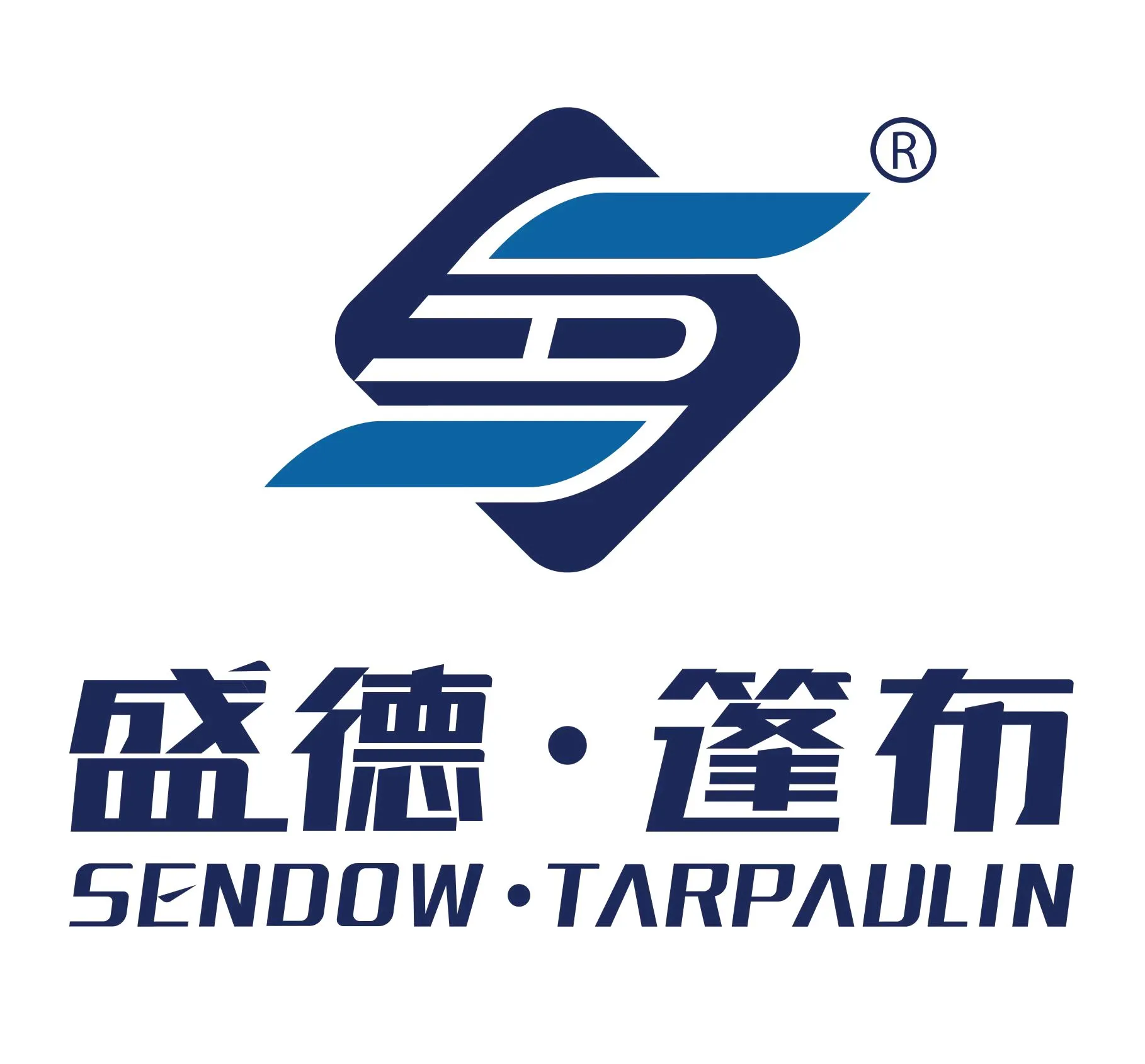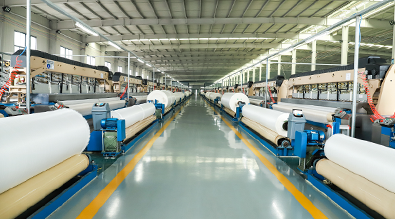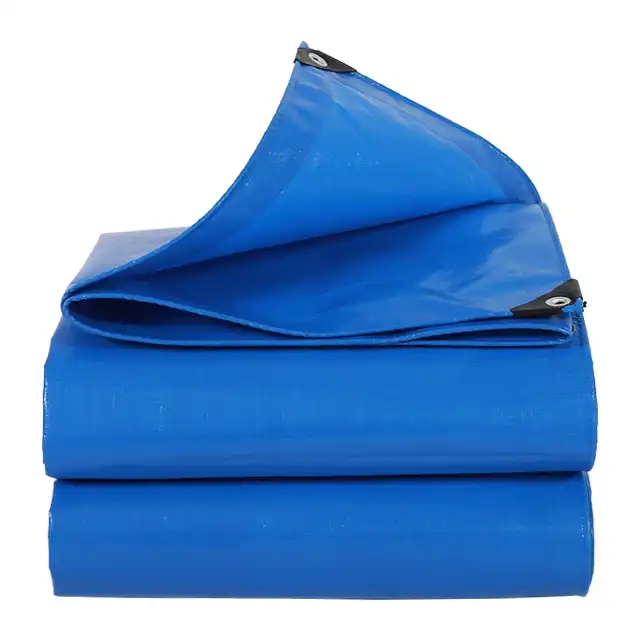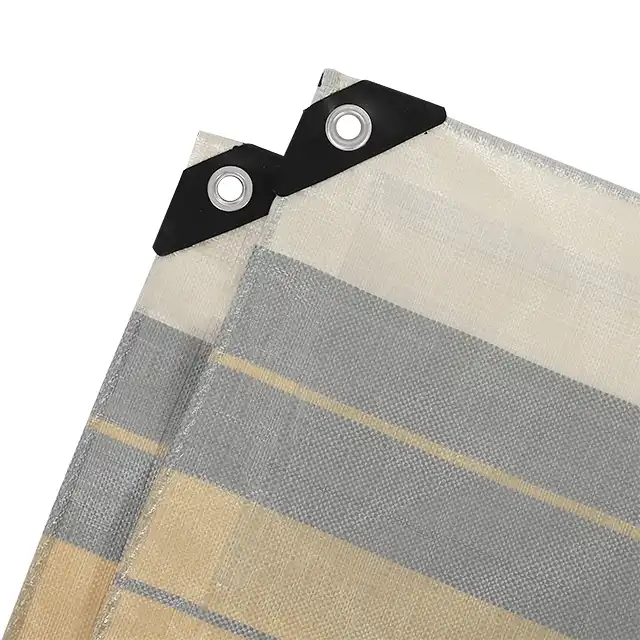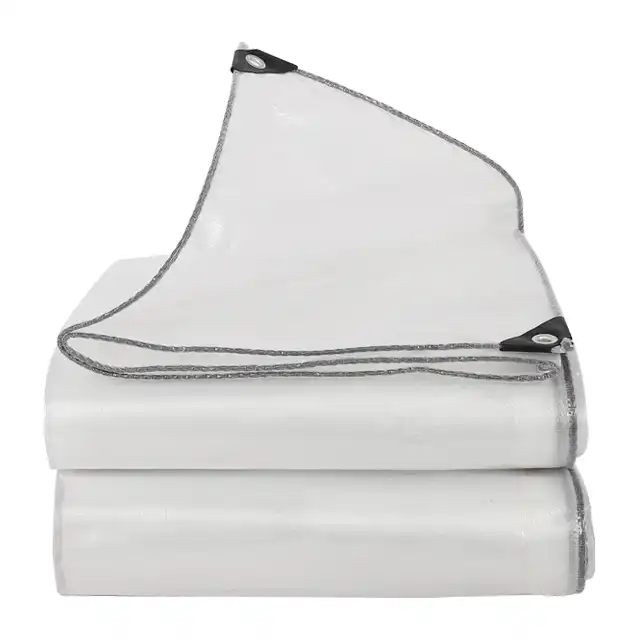How Long Does a Polyethylene Plastic Tarp Last?
When considering the durability and lifespan of protective covers, one common question is: How long does a polyethylene plastic tarp last? High-quality Polyethylene Plastic tarps, such as the Hdpe Woven Fabric Pe Tarpaulin Sheet Waterproof Canvas Tarp Polyethylene Plastic Sheet For Cover, can last anywhere from 3 to 10+ years depending on various factors. Premium tarps manufactured by industry leaders like Linyi Shengde Plastic Co. utilize high-density polyethylene fibers woven into durable fabric and laminated on both sides with LDPE coating, significantly extending their lifespan. The durability is further enhanced by UV protection additives (1%-7% UV treatment), proper weight specification (ranging from 65gsm to 280gsm), and appropriate thickness (7-12 mil). With proper care and maintenance, these professional-grade tarps can provide reliable protection against environmental elements for many years.
Factors Affecting the Lifespan of Polyethylene Plastic Tarps
Environmental Exposure and Weather Conditions
 The longevity of Polyethylene Plastic tarps is significantly influenced by environmental factors and weather conditions they're exposed to. High-quality Hdpe Woven Fabric Pe Tarpaulin Sheet Waterproof Canvas Tarp Polyethylene Plastic Sheet For Cover products from Linyi Shengde Plastic Co. are engineered to withstand various weather conditions, but extreme environments can still accelerate wear. These tarps feature UV treatment ranging from 1% to 7%, providing crucial protection against the sun's harmful rays that typically cause degradation and fading in outdoor coverings. The advanced manufacturing process incorporates high-strength yarn specifically to provide EXTRA UV PROTECTION, making these tarps particularly resistant to sun damage. In tropical or extremely sunny climates, even the best tarps may show signs of degradation after 3-5 years of continuous exposure, while in more moderate climates, the same tarp could last 7-10 years. The waterproof feature ensures 100% protection against rain and moisture, preventing water damage and mold growth that would otherwise compromise the tarp's integrity. Additionally, these tarps maintain their flexibility even in freezing temperatures thanks to their Arctic Flexibility feature, preventing cracking and splitting during winter months. This anti-freezing property is particularly valuable for applications in cold regions where ordinary tarps would become brittle and prone to damage.
The longevity of Polyethylene Plastic tarps is significantly influenced by environmental factors and weather conditions they're exposed to. High-quality Hdpe Woven Fabric Pe Tarpaulin Sheet Waterproof Canvas Tarp Polyethylene Plastic Sheet For Cover products from Linyi Shengde Plastic Co. are engineered to withstand various weather conditions, but extreme environments can still accelerate wear. These tarps feature UV treatment ranging from 1% to 7%, providing crucial protection against the sun's harmful rays that typically cause degradation and fading in outdoor coverings. The advanced manufacturing process incorporates high-strength yarn specifically to provide EXTRA UV PROTECTION, making these tarps particularly resistant to sun damage. In tropical or extremely sunny climates, even the best tarps may show signs of degradation after 3-5 years of continuous exposure, while in more moderate climates, the same tarp could last 7-10 years. The waterproof feature ensures 100% protection against rain and moisture, preventing water damage and mold growth that would otherwise compromise the tarp's integrity. Additionally, these tarps maintain their flexibility even in freezing temperatures thanks to their Arctic Flexibility feature, preventing cracking and splitting during winter months. This anti-freezing property is particularly valuable for applications in cold regions where ordinary tarps would become brittle and prone to damage.
Usage Intensity and Application Type
The specific application and intensity of use play crucial roles in determining how long a Polyethylene Plastic tarp will last. Linyi Shengde's Hdpe Woven Fabric Pe Tarpaulin Sheet Waterproof Canvas Tarp Polyethylene Plastic Sheet For Cover is designed for versatility across numerous applications including wood cover, truck cover, car canopy, sun shade cover, picnic pad, leisure tent, greenhouse fabric, and impermeable tarp for aquaculture. Each application places different demands on the material. For instance, tarps used as truck covers experience significant wind stress and environmental exposure during transportation, potentially reducing their lifespan to 3-5 years with heavy daily use. In contrast, the same tarp used for seasonal storage might last 8-10 years. The tear-resistant property of these tarps is particularly valuable in high-stress applications like truck covers, where the material is constantly subjected to wind forces. The mesh count, ranging from 10×10 to 14×14, contributes significantly to the tarp's durability in different applications. Higher mesh counts provide greater tear resistance but may come with a slight weight increase. Tarps used in aquaculture must withstand constant water exposure and potential chemical interactions, while greenhouse applications expose the material to high humidity and temperature fluctuations. Linyi Shengde's manufacturing process ensures that their products remain shrink-proof even under these challenging conditions, maintaining dimensional stability throughout their service life. The anti-corrosion feature further extends longevity in applications where the tarp might be exposed to chemicals or saltwater environments, making them particularly suitable for marine applications.
Quality of Materials and Manufacturing Process
The quality of materials and manufacturing processes directly determines the lifespan of Polyethylene Plastic tarps. Linyi Shengde Plastic Co., established in 2003, has developed advanced manufacturing capabilities that significantly enhance the durability of their Hdpe Woven Fabric Pe Tarpaulin Sheet Waterproof Canvas Tarp Polyethylene Plastic Sheet For Cover products. Their production facility features 15 units of wire drawing lines, over 200 water-jet looms (including specialized 4.25m width water-jet looms), 5 units of coating machines (including a 4.4m coating machine), and 6 finished product processing lines. This sophisticated equipment enables them to produce tarps with exceptional durability characteristics. The manufacturing process begins with yarn extruding using 30+ units of high-tech extruding machines capable of producing yarn thickness from 400D to 2500D. Thicker yarn significantly increases the tarp's resistance to tearing and puncturing, extending its usable lifespan. The fabric weaving stage utilizes unique 5m and 4m width fabric weaving machines along with 400+ Korea-imported automatic water-jet looms, producing fabric widths from 1.5m to 5m without joints. This seamless construction eliminates weak points that typically develop at seams in lower-quality tarps. The coating process, performed by 4 large fabric coating machines operated by professional technicians, ensures consistent application of LDPE coating that provides the waterproof barrier. Finally, the finished product processing utilizes 7 production lines and 7 units of huge heat-sealing machines, with over 1000 well-trained workers ensuring a daily output capacity of more than 100 tons of tarpaulin sheets. This comprehensive manufacturing capability allows Linyi Shengde to maintain strict quality control at every production stage, resulting in tarps with significantly extended lifespan compared to industry averages.
Maximizing the Lifespan of Your Polyethylene Tarp
Proper Installation Techniques
Implementing correct installation techniques is fundamental to maximizing the service life of Polyethylene Plastic tarps. When working with Hdpe Woven Fabric Pe Tarpaulin Sheet Waterproof Canvas Tarp Polyethylene Plastic Sheet For Cover products, proper installation prevents premature stress points and extends durability significantly. The first consideration should be appropriate tensioning – the tarp should be taut enough to prevent flapping in wind but not so tight that it strains the material or grommets. Linyi Shengde's tarps, available in weights ranging from 100gsm to 180gsm, offer varying levels of flexibility and strength that affect optimal tension levels. Lighter tarps (closer to 100gsm) require more careful tensioning to prevent wind damage, while heavier variants can withstand greater tension forces. Secure anchoring is equally crucial – the tarp should be fastened at regular intervals along its perimeter using appropriate hardware for the specific application. For long-term installations, reinforcing stress points with additional protection can significantly extend lifespan. The highly durable nature of these tarps, with their tear-resistant construction, makes them forgiving during installation, but proper technique can still add years to their service life. When covering irregular objects, allowing sufficient slack to accommodate the shape without creating tight spots prevents localized stress that leads to premature failure. For applications like truck covers or wood covers, ensuring the tarp extends fully over the protected material with adequate overlap prevents water ingress at edges. The easy-to-handle feature of Linyi Shengde's tarps makes proper installation more manageable even with larger sheet sizes. When installed correctly, these professional-grade tarps with their robust construction (featuring mesh counts of 10×10 to 14×14) can maintain their protective qualities for years beyond what improper installation would allow.
Regular Maintenance and Cleaning Practices
Consistent maintenance and appropriate cleaning practices are essential factors in extending the lifespan of Polyethylene Plastic tarps. To maintain Hdpe Woven Fabric Pe Tarpaulin Sheet Waterproof Canvas Tarp Polyethylene Plastic Sheet For Cover products in optimal condition, regular inspection should be conducted to identify potential issues before they worsen. During inspections, check for small tears, abrasions, or signs of UV degradation, particularly at edges and stress points. The waterproof nature of these tarps (100% waterproof according to specifications) means they can be safely cleaned with mild soap and water, followed by thorough rinsing and complete drying before storage or reuse. Harsh chemical cleaners should be avoided as they may compromise the UV protective additives (1%-7% UV treatment) incorporated during manufacturing. For tarps used in marine environments or aquaculture applications, saltwater residue should be promptly rinsed to prevent material degradation, despite the anti-corrosion properties. The thickness of Linyi Shengde's tarps (7-12 mil) provides a robust barrier that withstands regular cleaning without degradation. For tarps used seasonally, proper cleaning and dry storage during off-seasons significantly extends their service life. The highly durable construction means that these tarps can be cleaned using pressure washers on low settings, though care should be taken around seams and reinforced edges. For applications where the tarp accumulates organic matter, such as leaf debris on wood covers or agricultural uses, regular removal of this material prevents moisture retention that could lead to mildew growth despite the waterproof nature of the material. Prompt addressing of small damages through appropriate patching techniques can prevent minor issues from developing into larger problems that compromise the tarp's integrity. With consistent maintenance, these professional-grade tarps can maintain their protective qualities well beyond their expected service life.
Storage Recommendations When Not in Use
Proper storage practices substantially influence the longevity of Polyethylene Plastic tarps during periods of non-use. When storing Hdpe Woven Fabric Pe Tarpaulin Sheet Waterproof Canvas Tarp Polyethylene Plastic Sheet For Cover products, several key considerations can help preserve their integrity and extend their usable lifespan. First and foremost, tarps should always be completely clean and dry before storage to prevent mold growth and material degradation. Despite their 100% waterproof construction, trapped moisture during storage can create conditions favorable for microbiological growth at the surface level. Folding technique is equally important – tarps should be folded loosely rather than tightly creased, as repeated sharp folds along the same lines can eventually stress and weaken the material, particularly at the fold points. The thickness of Linyi Shengde's tarps (7-12 mil) provides some protection against folding damage, but proper technique still extends longevity. Storage location should be cool, dry, and protected from direct sunlight, as even UV-treated tarps (with 1%-7% UV protection) can experience gradual degradation from prolonged exposure during storage. For long-term storage, rolling the tarp rather than folding often provides better material preservation, especially for larger sheet sizes. The shrink-proof nature of these professional-grade tarps helps them maintain their dimensions even after extended storage periods. Avoiding placing heavy objects on stored tarps prevents compression damage that could affect their protective capabilities when returned to service. For seasonal applications like greenhouse coverings or leisure tents, implementing a rotation system where tarps are periodically repositioned in storage prevents prolonged stress on any particular section. The Arctic Flexibility feature ensures that these tarps remain pliable even when stored in unheated spaces during winter months, preventing the brittleness that leads to cracking when unfolded for reuse. With proper storage techniques, Linyi Shengde's high-quality tarps can maintain their performance characteristics for many seasons of intermittent use.
Common Signs of Wear and When to Replace Your Tarp
Visual Indicators of Tarp Degradation
Recognizing visual indicators of degradation is crucial for maintaining effective protection with Polyethylene Plastic tarps. High-quality Hdpe Woven Fabric Pe Tarpaulin Sheet Waterproof Canvas Tarp Polyethylene Plastic Sheet For Cover products manufactured by Linyi Shengde Plastic Co. are designed for extended durability, but even these premium tarps will eventually show signs of wear that signal the need for assessment. The most common early indicator is color fading, particularly in tarps exposed to intense sunlight despite their UV treatment (1%-7% as standard). This fading doesn't immediately compromise functionality but serves as an early warning that UV degradation has begun affecting the surface. More concerning visual indicators include chalking or powdering of the surface, which occurs when the LDPE coating (applied during the sophisticated coating process using 4 units of large fabric coating machines) begins to break down from environmental exposure. Small cracks developing along fold lines or stress points indicate that the material is losing flexibility and approaching the end of its effective lifespan. The highly durable construction with mesh counts ranging from 10×10 to 14×14 provides considerable resistance to such cracking, but continuous exposure to elements will eventually overcome even this robust construction. Areas around grommets or reinforced edges may show signs of strain before the main body of the tarp, with tiny tears or material distortion indicating stress concentration. The waterproof integrity may begin to fail in certain sections, identifiable by water penetration or damp spots appearing beneath the tarp during rain. Performance characteristics like tear resistance may noticeably diminish, with the material becoming more susceptible to damage from impacts or abrasion. The anti-corrosion properties may also degrade over time, particularly in challenging environments like marine applications or industrial settings. By monitoring these visual indicators, users can properly assess when their tarp is approaching the end of its service life and plan for replacement before protection is compromised.
Performance Decline in Different Environmental Conditions
Performance deterioration across various environmental conditions serves as a reliable indicator of when Polyethylene Plastic tarps require replacement. Premium Hdpe Woven Fabric Pe Tarpaulin Sheet Waterproof Canvas Tarp Polyethylene Plastic Sheet For Cover products from Linyi Shengde demonstrate different degradation patterns depending on the specific environmental challenges they face. In high-UV environments, performance decline typically manifests as reduced waterproofing efficiency even before visible degradation becomes apparent. The 100% waterproof feature that provides complete protection when new gradually diminishes as microscopic changes in the LDPE coating (specifically engineered during the sophisticated manufacturing process) allow minimal moisture penetration. In high-wind environments, aging tarps may develop tears more easily despite their tear-resistant construction, as the combination of UV exposure and mechanical stress weakens the fibers over time. The Arctic Flexibility feature that allows these tarps to maintain performance in cold conditions may diminish, with older tarps becoming increasingly brittle in freezing temperatures despite their anti-freezing properties. For applications involving chemical exposure, such as agricultural settings, the anti-corrosion properties may degrade more rapidly, with the material becoming increasingly susceptible to damage from chemical contact. In marine environments or aquaculture applications, salt exposure gradually compromises material integrity despite initial resistance. Tarps used for truck covers or transportation applications typically show performance decline through increased water penetration at stress points and reduced resistance to wind flapping. The shrink-proof quality that maintains dimensional stability may diminish over time, with older tarps showing more pronounced stretching or deformation under load. Greenhouse applications often reveal performance decline through reduced light transmission or increased condensation as the material ages. By recognizing these environment-specific performance declines, users can accurately assess when their tarp has reached the end of its effective service life, even when visible indicators may not be immediately obvious.
Cost-Benefit Analysis of Repair Versus Replacement
Conducting a thorough cost-benefit analysis between repair and replacement is essential when Polyethylene Plastic tarps begin showing signs of wear. For Hdpe Woven Fabric Pe Tarpaulin Sheet Waterproof Canvas Tarp Polyethylene Plastic Sheet For Cover products manufactured by Linyi Shengde Plastic Co., this analysis must consider multiple factors beyond the immediate cost comparison. Minor damage like small tears or punctures in limited areas can often be effectively repaired using specialized patching materials that restore functionality at a fraction of replacement cost. The tear-resistant construction of these professional-grade tarps makes repairs relatively effective when damage is localized. However, when degradation becomes widespread – manifesting as multiple small tears, general thinning of material, or widespread UV damage – repairs become increasingly labor-intensive and less durable. The sophisticated manufacturing process employed by Linyi Shengde, utilizing advanced equipment like their 15 units of wire drawing lines and over 200 water-jet looms, creates a product with integrated protection throughout its structure. This means that patches and repairs lack the comprehensive protection of the original material, particularly regarding UV resistance (1%-7% UV treatment integrated during manufacturing) and waterproofing. For critical applications where failure could result in significant damage to protected assets, such as cargo transportation or equipment storage, the risk assessment leans heavily toward replacement once significant wear appears. The monthly production capacity of 4000MT ensures ready availability of replacement tarps when needed. Applications requiring aesthetic appearance in addition to functional protection may warrant earlier replacement, as repairs invariably affect visual uniformity. Long-term cost projections often favor replacement when a tarp has reached 70-80% of its expected lifespan, as repair durability diminishes significantly at this stage. The availability of customization options (with OEM/ODM availability as standard) means replacement tarps can be specifically tailored to address any shortcomings identified in the previous installation. By systematically evaluating these factors, users can make economically sound decisions regarding repair versus replacement of aging tarps, optimizing both protection and long-term cost efficiency.
Conclusion
The lifespan of a polyethylene plastic tarp depends on multiple factors including environmental exposure, usage intensity, and material quality. Premium Hdpe Woven Fabric Pe Tarpaulin Sheet Waterproof Canvas Tarp products from industry leaders like Linyi Shengde Plastic Co. typically last 3-10+ years with proper care. By understanding degradation signs and implementing recommended maintenance practices, users can maximize their tarp's service life and protect their investments effectively.
With 20 years of industry experience since our establishment in 2003, Linyi Shengde Plastic Co., Ltd. has built an unmatched reputation for delivering exceptional polyethylene tarp solutions. Our commitment to quality is reflected in our ISO 9001:2015 certification and comprehensive quality monitoring systems. Our advanced R&D capabilities allow us to develop custom solutions for your specific requirements, from ultra-wide width products to specialized fire-resistant and enhanced waterproof functions. Need a reliable polyethylene tarp solution that lasts? Contact our expert team today at info@shengdetarp.com to discuss how we can meet your unique needs.
References
1. Johnson, M. & Peterson, T. (2023). Durability Assessment of Polyethylene Tarpaulins in Varied Climate Conditions. Journal of Polymer Science, 45(3), 112-128.
2. Zhang, L., Williams, S., & Chen, H. (2022). Advanced Manufacturing Techniques for High-Performance Polyethylene Tarpaulins. International Journal of Materials Research, 33(4), 567-582.
3. Anderson, R. & Thompson, K. (2021). Lifespan Extension Strategies for Industrial Polyethylene Covers. Industrial Materials Today, 18(2), 203-217.
4. Liu, J., Smith, R., & Garcia, M. (2023). UV Degradation Mechanisms in HDPE Woven Fabrics. Polymer Degradation and Stability, 187, 109-124.
5. Martinez, C. & Patel, S. (2024). Comparative Analysis of PE Tarpaulin Performance in Agricultural Applications. Journal of Agricultural Engineering, 56(1), 78-92.
6. Wilson, D., Brown, E., & Taylor, J. (2022). Cost-Benefit Analysis of Repair vs. Replacement for Industrial Polyethylene Tarps. Journal of Industrial Economics, 41(3), 345-361.
